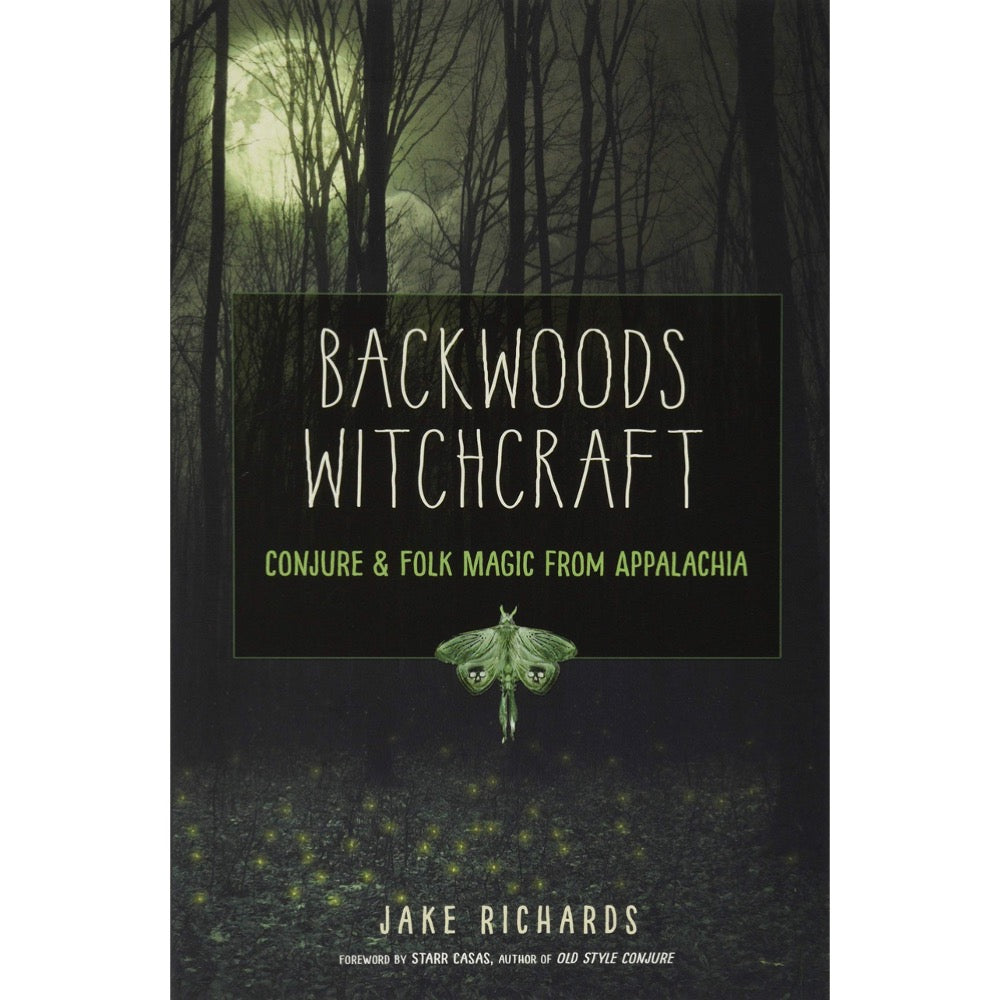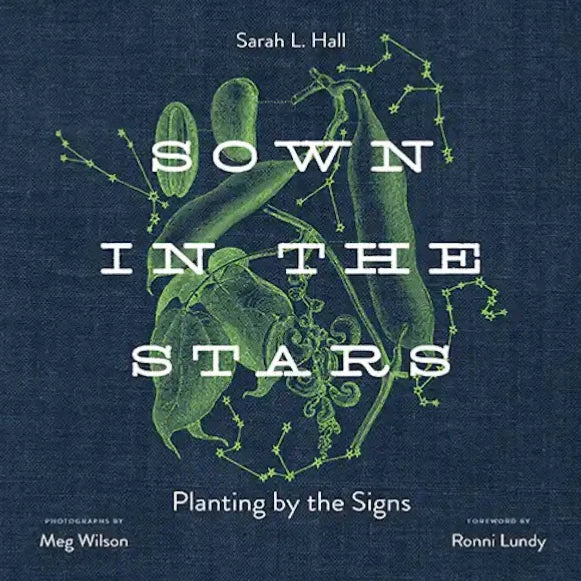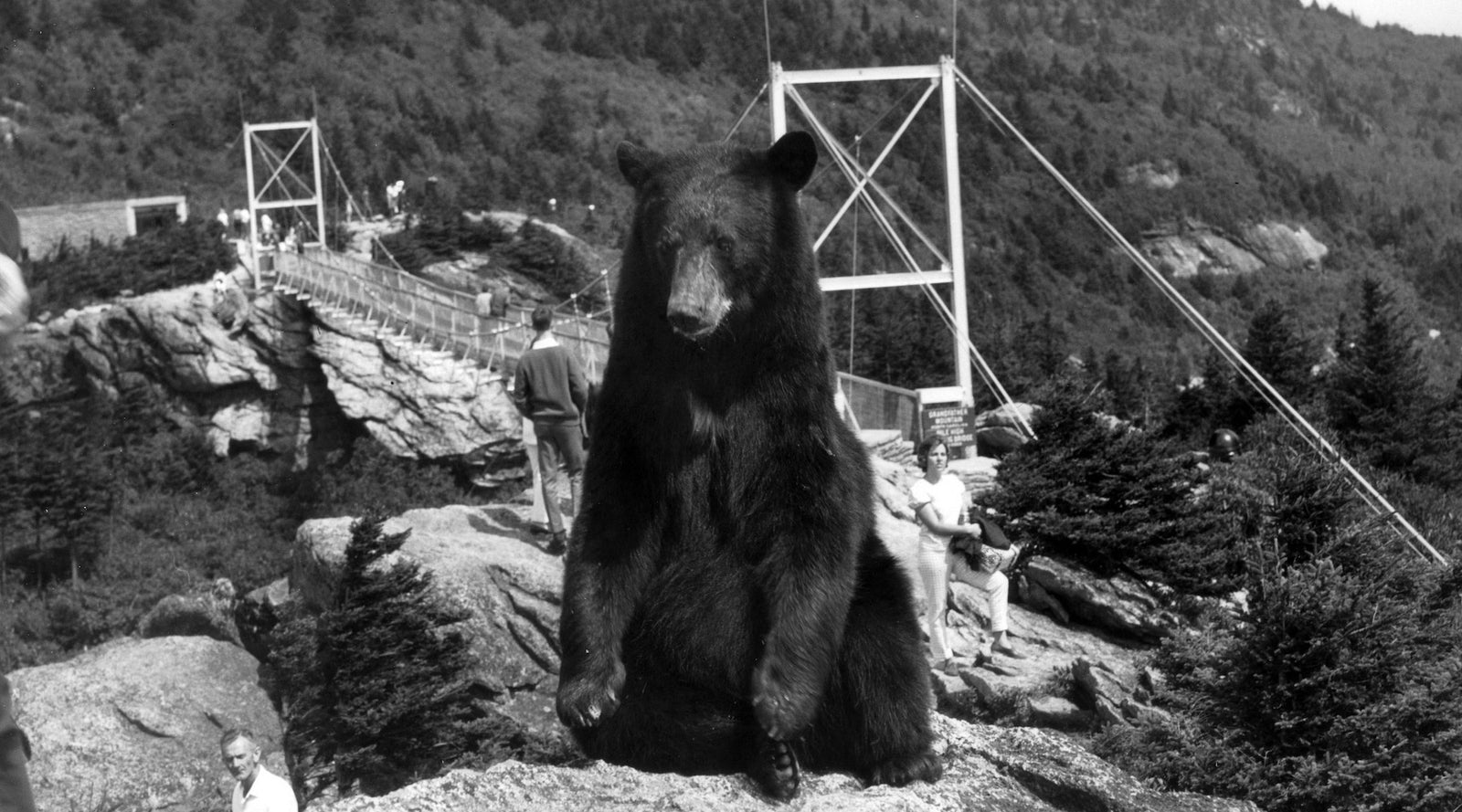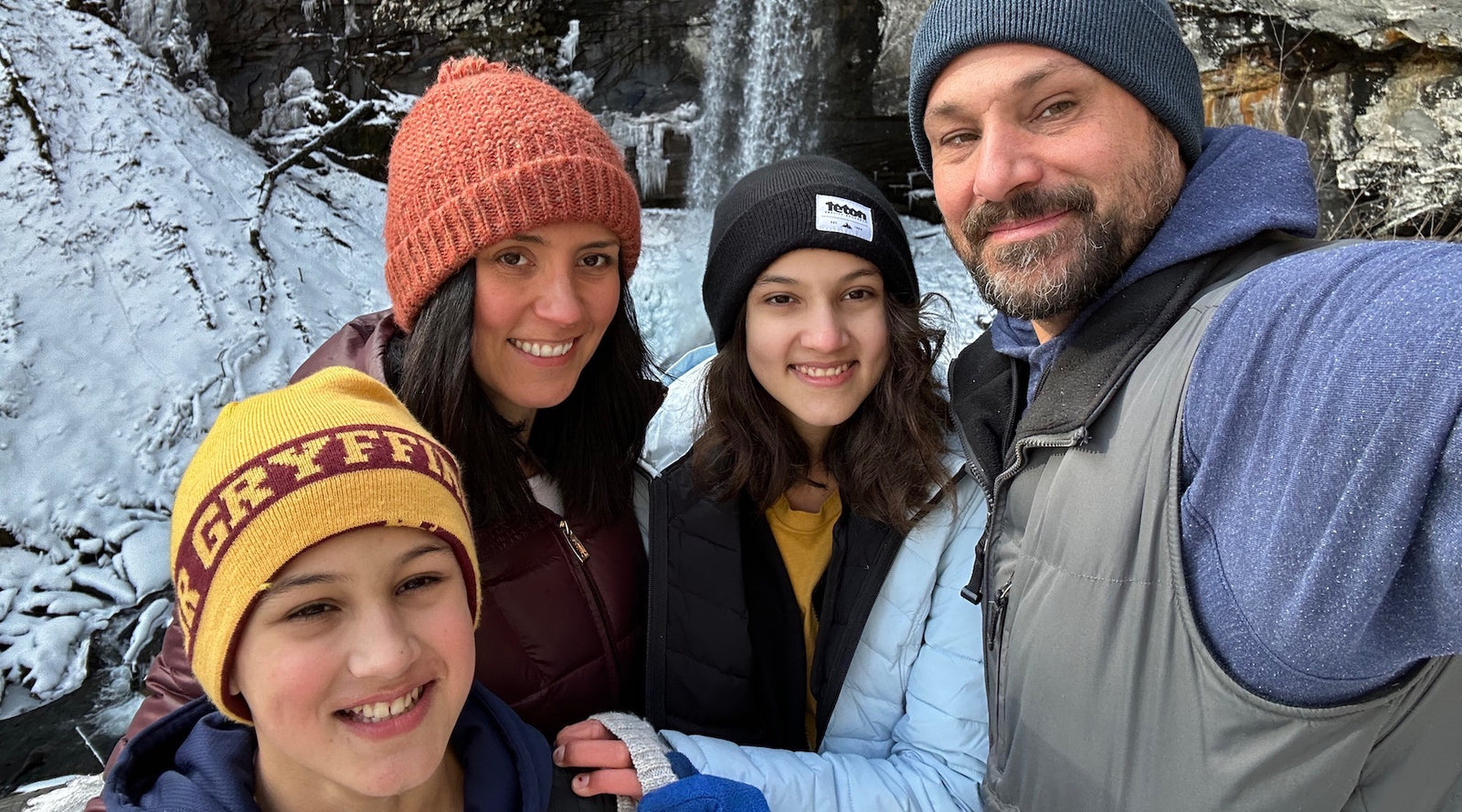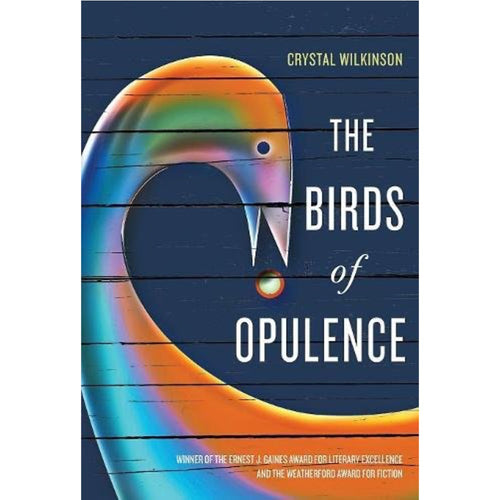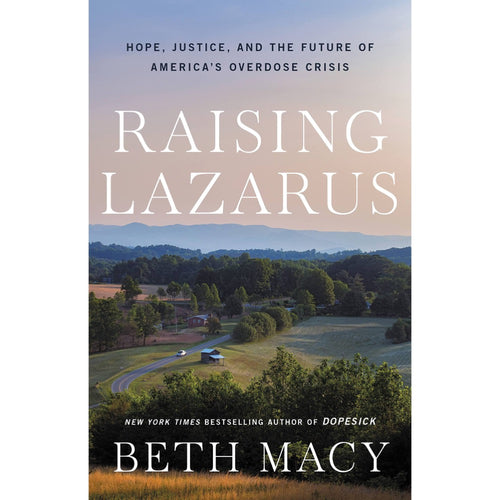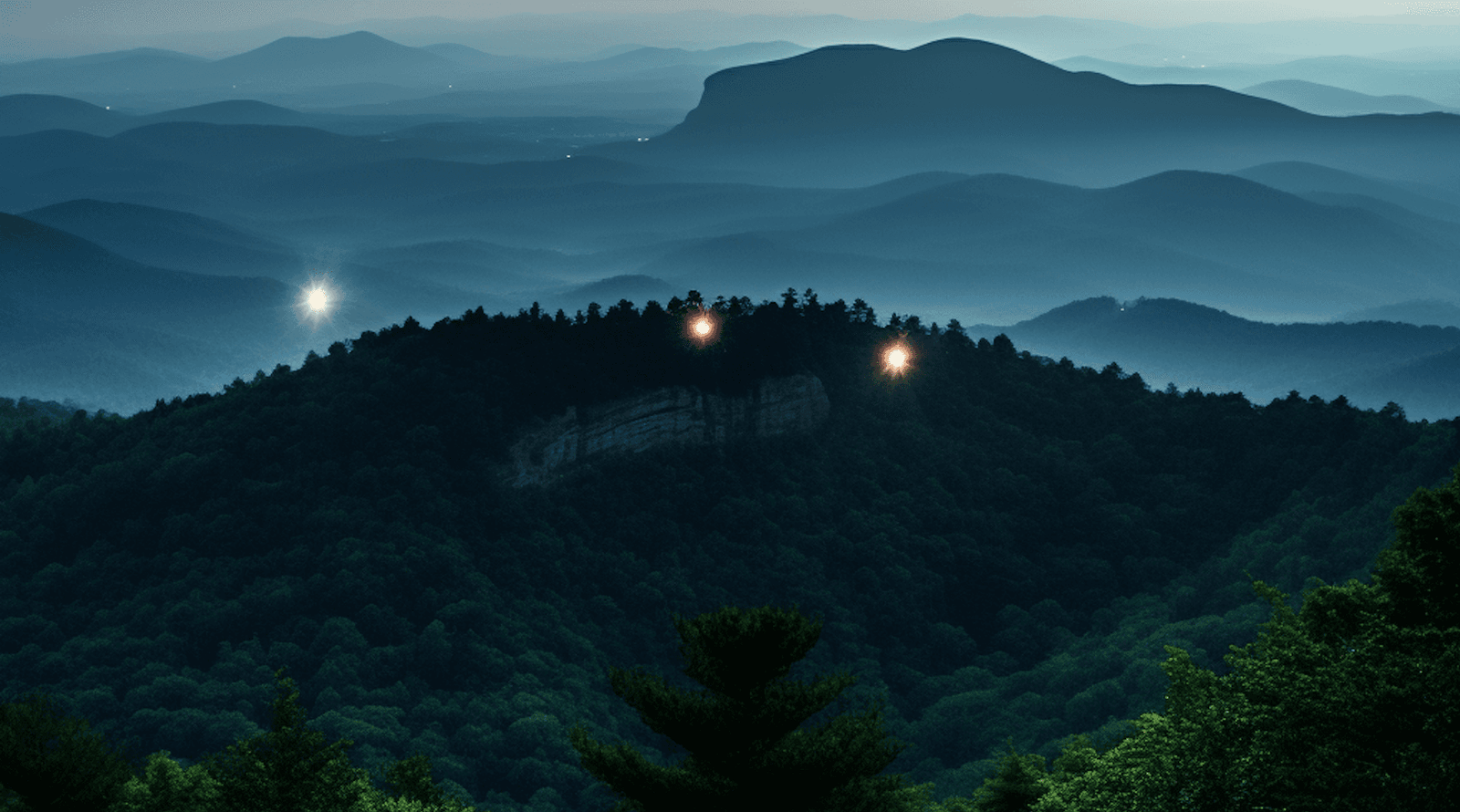
A.I. PROGRAM MIDJOURNEY'S DEPICTION OF THE BROWN MOUNTAIN LIGHTS.
Ghosts? Aliens? Hissing balls of lightning? Everyone has a theory about Burke County, N.C.'s biggest mystery.
It’s rare that Dr. Daniel B. Caton, an astronomy professor at Appalachian State University in Boone, North Carolina, sees something in the sky he can’t explain. But one evening a few decades ago, Daniel witnessed a phenomenon he’s still trying to wrap his head around.
That night, the professor was driving home from Asheville when he decided to take a detour to Wiseman’s View, an observation area perched above the western side of Linville Gorge. For an hour, he stood there as the wind whipped through the lonely canyon. He scanned the horizon intently, seeing nothing more than inky darkness. But right as Daniel turned to leave, a bright flash appeared overhead. For a few seconds, it lingered. Then, in an instant, it disappeared.
“I know it wasn’t a satellite or an airplane,” Daniel said. “And it appeared much higher than a star.”
Daniel can only offer one explanation: the Brown Mountain Lights.
First reported in 1854, the Brown Mountain Lights are mysterious orbs that hover above the eponymous peak in Burke County. Over the years, folks have developed many theories as to what causes these nighttime disturbances.
Superstitious sorts say the lights are the ghosts of a mother and child murdered in the neighboring Jonas Ridge community. Meanwhile, in his bluegrass song “Brown Mountain Lights,” early country music star Scotty Wiseman attributed the lights to the spirit of a “trusty ol’ slave” searching for his long-lost “master,” a notion that manages to be both fanciful and offensive.
WONDERFULLY WEIRD
Of course, extraterrestrial enthusiasts have their theories, too. In 1965, for instance, furniture salesman Ralph Lael visited Linville Gorge and said he witnessed the peculiar phenomenon. “I’m frightened, don’t know what to do,” he later wrote. “One light moves forward. It is now about ten feet from me and it is glowing. I could read a newspaper by the shining of it.”
Rather than run for safety, Ralph claims he followed the anomaly through the forest to a secret cave. It’s here that the orb introduced itself as a gas-based lifeform from Venus. “Do not fear,” the alien droned. “There is no danger here.”
Long story short, Ralph supposedly traveled to Venus where natives allow him to fornicate with their voluptuous queen. Then, just like that, they shipped the North Carolina boy back to Earth. Ralph chronicled his intergalactic travel (and hookup) in a 28-page pamphlet titled “The Brown Mountain Lights.”
That pamphlet apparently ended up in the hands of producers for "The X-Files," who based a 1999 episode around the lights. In the show, FBI special agents Fox Mulder and Dana Scully investigate two hikers who are found dead in the vicinity of Brown Mountain. But spoiler alert: said hikers aren’t actually dead. Instead, they have been abducted by aliens and are being held captive in a cave.
Which leads us back to Dr. Daniel B. Caton and his colleagues. Around the time of that episode, they installed two synchronized cameras overlooking Brown Mountain. After spending countless hours weeding through footage, they finally captured a grainy shot of the elusive lights in July 2016.

APPALACHIAN STATE UNIVERSITY (A.S.U.) PHOTO OF THE BROWN MOUNTAIN LIGHTS. PHOTO PROVIDED BY A.S.U.
While noteworthy, the image offers little insight into what actually causes this illuminative oddity.
As of today, the team’s best explanation is hissing orbs of lightning called ball lightning. But since this phenomenon is “very random” and “very difficult to study,” Daniel can’t say with 100 percent confidence that it’s the reason. What he can say definitively is this: “We just don’t know what causes the Brown Mountain Lights.”
And so, the mystery lives on.


